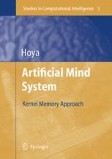Search
Search Results
-
An Efficient QR Algorithm for a Hessenberg Submatrix of a Unitary Matrix
We describe an efficient procedure for implementing the Hessenberg QR algorithm on a class of matrices that we refer to as subunitary matrices. This...
-
Arithmetic Properties of Observable Time Dependent Systems
Here we consider questions of discrete observability for linear systems of ordinary differential equations, extending work by Martin and Smith in...
-
Endomorphisms of Hopf Algebras and a Little Bit of Control
Firstly this paper summarizes some of the the relations between control theory and coalgebra and Hopf algebra theory, particularly the fact that the...
-
Introduction
The topic of this book is the stability analysis of continuous finite dimensional systems. The book consists of 13 chapters and two appendices.
-
10. Aizerman’s Problem for Nonautonomous Systems
Let b k (t) (t≥ 0; k=1, ... , n) be real non-negative scalar-valued functions having continuous derivatives up to...
-
Desynchronization and Chaos in the Kuramoto Model
Abstract. The Kuramoto model of N globally coupled phase oscillators is an essentially non-linear dynamical system with a rich dynamical behavior and...
-
Spatially Extended Monotone Map**s
This chapter deals with the study of travelling waves in discrete time spatially extended systems with monotone dynamics. Such systems appear for...
-
Optimal Control of Stochastic Processes
Many control problems appearing for complex systems are subject to imperfectly known disturbances. As we have learned in the previous chapter, these...
-
Applications of the Correlation Length
The correlation length is the system–dependent parameter, which defines the structure of the dominant current–carrying (electric or fluid) paths....
-
Pressure Saturation Curves and the Critical Volume Fraction for Percolation
The pressure-saturation curves of porous media give fundamental information about the pore space. In equilibrium, ignoring effects due to hysteresis,...
-
Effects of Multi-Scale Heterogeneity
It is generally agreed that problems with multi-scale heterogeneity present the biggest challenge to computation and understanding. A few such...
-
From Classical Connectionist Models to Probabilistic/Generalised Regression Neural Networks (PNNs/GRNNs)
This chapter begins by briefly summarising some of the well-known classical connectionist/artificial neural network models such as multi-layered...
-
Language and Thinking Modules
In this chapter, we focus upon the two modules which are closely tied to the concept of “action planning”, i.e. the 1) language and 2) thinking...
-
Sensation and Perception Modules
In any kind of creature, both the mechanisms of sensation and perception are indispensable for continuous living, e.g. to find edible plants/fruits...
-
12. Orbital Stability and Forced Oscillations
Let us consider a system described by the equation...
-
1. Preliminaries
In the sequel, C n is an n-dimensional complex Euclidean space and...
-
The CML2004 Project
Coupled map lattices (CML) are basic models for the time evolution of nonlinear systems which, above all, are extended in space or involve many...
-
The Frenkel–Kontorova Model
In the preface to his monograph on the structure of Evolutionary Theory [1], the late professor Stephen Jay Gould attributes to the philosopher...
-
On Phase Transitions in Coupled Map Lattices
Coupled map lattices are a paradigm for studying fundamental questions in spatially extended dynamical systems. Within this tutorial we focus on...
-
Some Aspects of Low-Mach-Number External Flows
In this chapter, we consider first, in Sect. 4.1, a detailed derivation of the Navier–Fourier initial–boundary–value problem for the Navier velocity...
